
As she celebrates her 20th season with ABT, Gill makes the cover of Irish America, and is named one of their inaugural “Top 50 Power Women”. Brava!
Haunting the Web Since 1999

As she celebrates her 20th season with ABT, Gill makes the cover of Irish America, and is named one of their inaugural “Top 50 Power Women”. Brava!

In the Prospect, David Dayen explains how deficit-witch-hunting and hubris paved the way for Brexit. particularly David Cameron and the Tories’ “general belief in expansionary austerity, that you could cut your way to prosperity. For those that don’t recall, this led to the brink of a triple-dip recession, and terrible growth numbers for years and years…What Leave offers, a toxic stew of isolation and racism, isn’t any good either. But when elites spend this long doing nothing for large swathes of the population, they’re willing to listen to anyone with a different idea.”
Since the UK’s faceplant last week, there’s been some talk (and. for some, wishful thinking) that Brexit is the prelude to Trump, fact-free appeals and all, and lord knows we spent far too much time of late playing the austerity game also. But I’ll stand by my “nope, not gonna happen” prediction here: The UK electorate is 90% white, America’s is one-third non-white — That’s a big difference, and the same sorts of nativist appeals just aren’t going to play here anymore — which I am very thankful for.
Still, Brexit is another sterling example of how, when people are justifiably angry about being screwed over, many of them may not vote in their best interests. And it’s emblematic of one of the more insightful comments I’ve heard recently about 2016 (and unfortunately I can’t figure out where I first saw it): When you have Latin American levels of inequality, you’ll end up with Latin American politics.
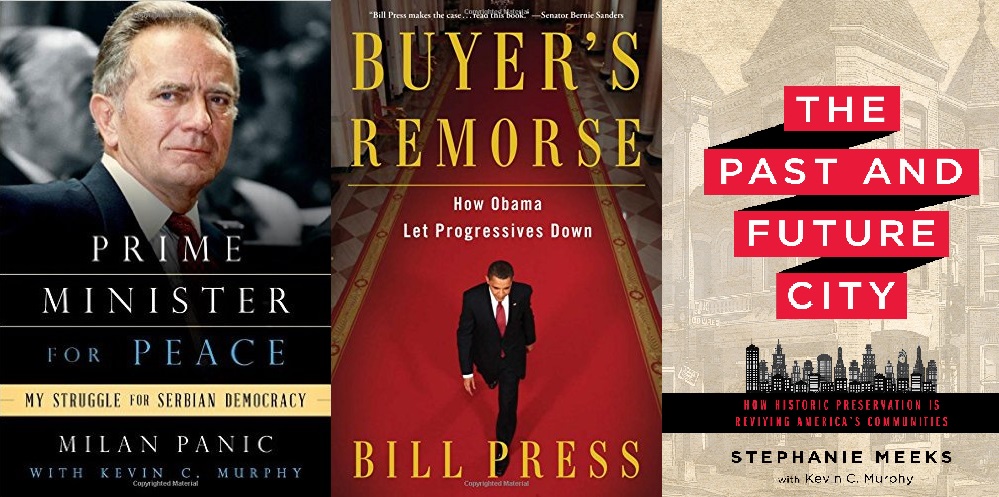
Prime Minister for Peace tells the story of Milan Panic, a California businessman who’s lived a Zelig-like life of sorts. As a child, he fought with the partisans against the Nazis in his native Yugoslavia. As a young man, he became an Olympic cyclist, and used that opportunity to escape Tito’s Communism and defect to the West. He then started a pharmaceutical business that made him a millionaire several times over.
This book focuses on his experiences in the 1990s, when he went back to the then-fragmenting Yugoslavia to serve as Prime Minister, and, in trying to bring peace to the Balkans, went toe-to-toe with Serbian dictator Slobodan Milosevic, not to mention cynical Western diplomats and sundry other ethnic nationalists.
Buyer’s Remorse, my sixth collaboration with Bill Press since 2001 — he writes; I research, outline, edit, and fine-tune — covers, in a nutshell, all the many ways Barack Obama’s presidency let progressives down. If you’ve swung by here at any point in the past, you’ve already heard me go on about this at some length, so no need to belabor it here. (This book came pre-researched, in that regard.)
Interesting sidenote: This has been the biggest-selling book I’ve been involved with since the Carville/Ken Starr one in ’99, in part because the Clinton campaign tried to bash Bernie Sanders with it in the early primaries. (Clinton is apparently Obama’s biggest fan, except when she isn’t.)
And The Past and Future City, coming out this October, is what I’ve been working on this past spring, with NTHP president and CEO Stephanie Meeks. It makes the case for historic preservation in the 21st century and argues, in effect, this isn’t your grandparents’ preservation movement anymore.
All over America, historic buildings are helping make cities more desirable, and urban residents happier and healthier. They are spurring economic growth, nurturing start-up businesses, and creating jobs. They are reducing energy costs and environmental impact, and encouraging healthy living practices like walking and cycling. They are helping to provide solutions to challenges like affordability, displacement, and climate change. And they are turning diverse neighborhoods into communities, and helping us come to terms with the difficult chapters in our history. And the best part is, they’re already there — they just need smart, forward-looking policies to unlock their power and potential. On sale soon!
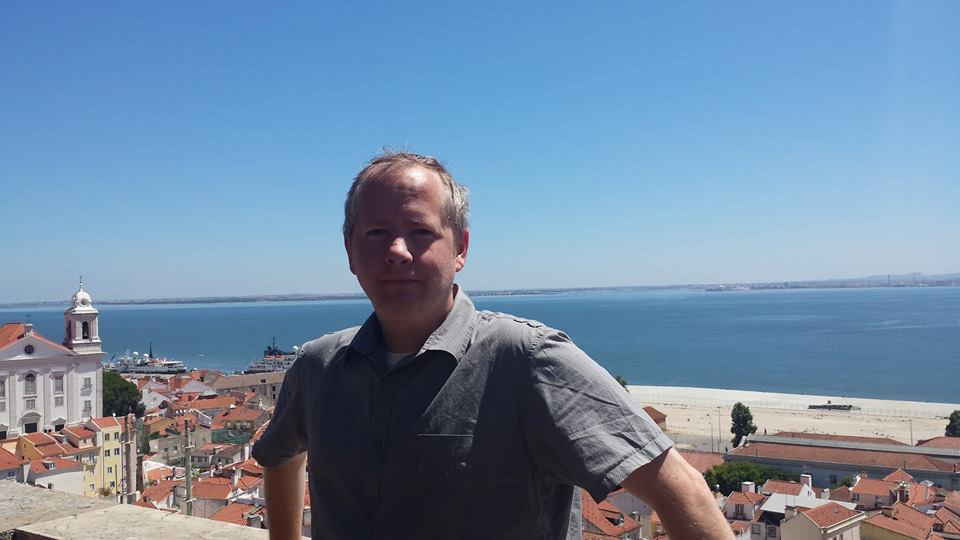
In the meantime, my girlfriend Amy and I have been getting in lots of travel this month — first a long weekend in New Orleans where, among other things, I for the first time took in the French quarter, Frenchman St., and the future final resting place of thespian and scholar Nicolas Cage.
A fortnight later, we were off to Iberia for a stretch, with four and a half days in Barcelona and Lisbon each (with a brief, three-hour layover tour through Brussels — alas, we didn’t have time to visit my old stomping grounds of Waterloo.)
August is probably not the best time to visit Barcelona — it was as crowded as Times Square at times, on much narrower streets. Still, it’s an amazing World City, and Gaudi’s unfinished Sagrada Familia is like nothing you’ll see anywhere else in this system. Very highly recommended (although, again, perhaps not in August.)
By comparison, Lisbon and its dozens of ancient churches was more of a sleepy European capital. But it too had its charms, not the least Sintra and its ninth century Moorish castle, only an hour or so away by train.
In any event, if you want to peruse some photos from the trip (and aren’t already a Facebook friend), I’ve put three dozen or so up in the long-neglected Flickr feed. Suffice to say, a grand time was had!


By way of Dangerous Meta, BBC briefly looks into the Lego infestation of Cornwall. “[On February 13th, 1997] 62 containers were lost overboard about 20 miles off Land’s End – and one of them was filled with nearly 4.8m pieces of Lego, bound for New York…shortly after that some of those Lego pieces began washing up in both the north and south coasts of Cornwall. They’re still coming in today.”

All in all, a really entertaining World Cup. And perhaps it’s because I reside in DC and spend time on Twitter, two of the most futbol-happy environments around stateside, but this felt like the year soccer might have finally broken through in America for real. Time will tell, I suppose. In the meantime, I should do a better job of supporting the MLS. Valar Futbolis!
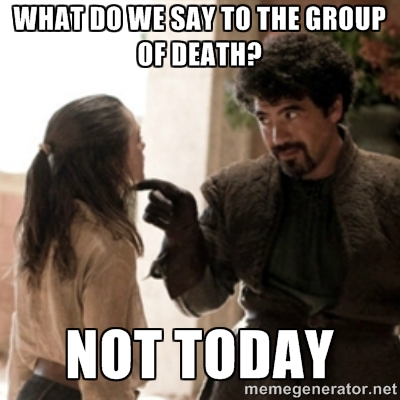
I believe.
I believe that.
I believe that we.
I believe that we will get what turns out to be an entirely acceptable result in our third group-stage game that, combined with the result between the other two teams, puts us through into the knockout round!”
As USA reaches the second round the hard way, MLS Soccer’s Matthew Doyle offers his tactical insights on the US-Germany match. “Whether it was Klinsmann’s own decisions, or his willingness to listen to others, I don’t really care. What matters is that he made the right moves to get us out of the group. I’m tipping my cap as I type this.”
Next up for we Americans, wily, athletic Belgium, who I feel bad rooting against, having lived there back in the day. Still, to mix my fantasy metaphors, there can be only one — on to Round 2.

As the US defeats Ghana 2-1 in their World Cup opener, garnering three critical points in this year’s Group of Death and revenge against the team that knocked us out in 2006 and 2010, MLS Soccer’s Matthew Doyle explains how the US’s risky rope-a-dope strategy worked. (Apparently, hardly ever controlling the ball was our master plan.) “The US invited Ghana forward, and wanted them to play thoughtlessly. Jermaine Jones pushed up the left real high to hunt the ball, and it worked.”
Of course, we also lost critical striker Jozy Altidore, who only broke out of a shooting slump against Nigeria, and whose speed, if nothing else, is needed to stretch the field. Without him, as this article points out, we’re going to have to bunker. And unless we start playing better (looking at you, Michael Bradley), Portugal and especially Germany are going to eviscerate us.
By the way, you’ve probably already figured this out by now, but Univision is streaming all of the games online for free. Accelerate the work day, work on your Spanish, and watch some very exciting futbol so far, all in one fell swoop.
Update “In their last four games – two friendlies and now the two group stage games – the US have conceded four goals after the 80th minute…They are sloppy in possession down the stretch, and even worse in closing down running lanes. All the precision you saw from this team through the first 80 minutes disappeared over the final 10.”
So Bradley did play better in Game 2’s almost-upset of Portugal…for 94 minutes. Sigh…well, we still have four points — hopefully the high-powered Germans will agree to a gentlemanly draw on Thursday.

In the NYT, historian Timothy Egan notes Paul Ryan’s rhetorical debt to those who helped perpetrate the Great Hunger in Ireland. “You never hear Ryan make character judgments about generations of wealthy who live off their inheritance, or farmers who get paid not to grow anything…Dependency is all one-way. ‘The whole British argument in the famine was that the poor are poor because of a character defect,’ said Christine Kinealy, a professor of Irish studies and director of Ireland’s Great Hunger Institute at Quinnipiac University. ‘It’s a dangerous, meanspirited and tired argument.'”
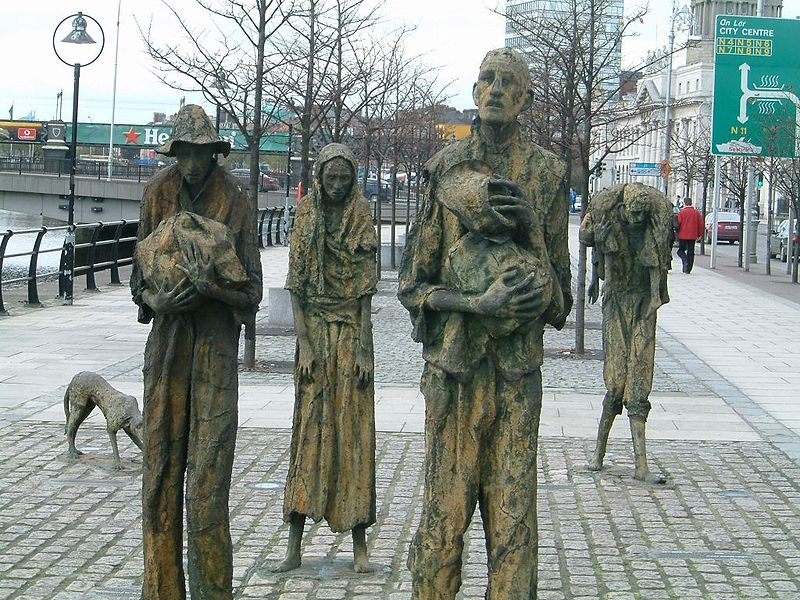
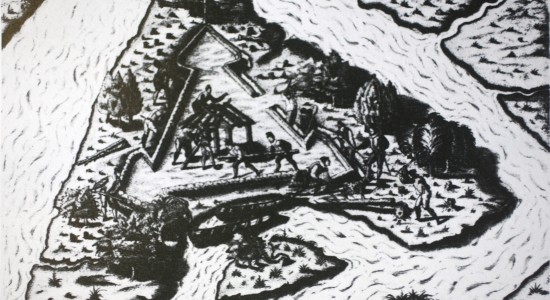
Two Florida professors announce they have found the site of Fort Caroline, a French outpost ravaged by the Spanish in 1565, near Darien, Georgia — not near Jacksonville where it was thought to be. ‘The frustrating and often acrimonious quest to find the fort has become a sort of American quest for the Holy Grail by archaeologists, historians and other scholars,’ he noted. ‘The inability to find the fort has made some wonder if it ever existed.'”
But other researchers are saying hold up. “‘It’s not conceivable that the soldiers could have made it to the Altamaha River from St. Augustine in two days…If they are correct, then the Spanish would have moved the St. Augustine settlement 70 miles south, to its present location. There is simply no evidence for this,’ said Meide. ‘This new theory doesn’t stand up to the archaeological and historical information that has been amassed by scholars over the past fifty years.'”
Thus far, archaeologists have yet to scope the newly proposed site. So, with all due respect to fellow historians, I’d probably wait to see what they find first.